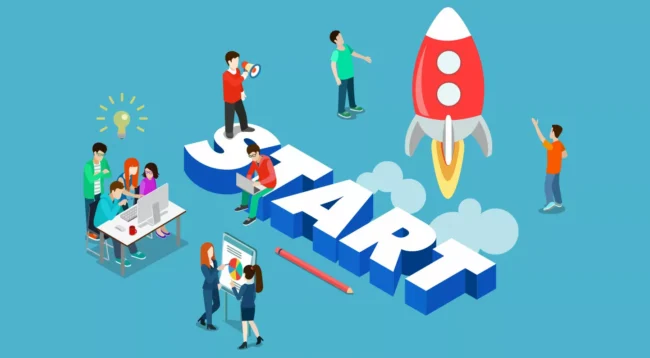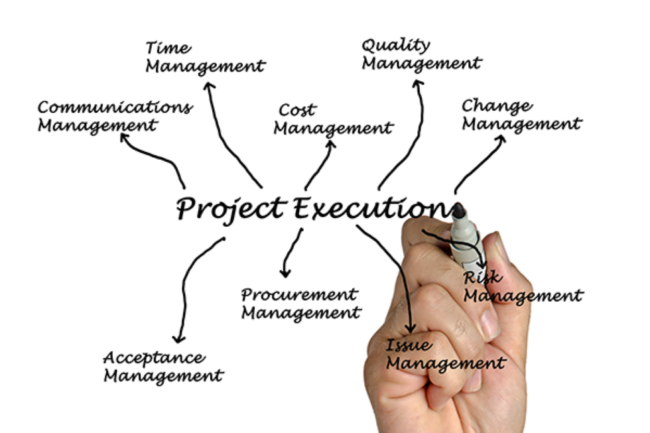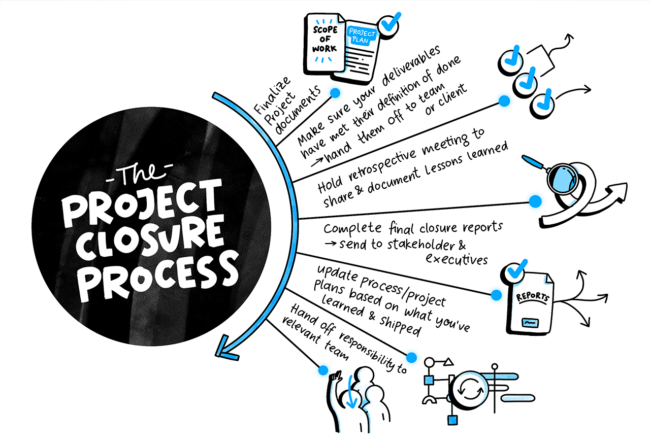Identifying the right project management steps is essential, whether you’re working on a small project with modest business goals, or a large multi-departmental initiative.
Planning ahead lets us identify all the steps needed to achieve our project goals – both in our personal and professional life. Planning is essential whenever we start a new project. However, other steps precede planning which are just as important.
Before we delve into these project phases, let’s examine why planning is so important.
The importance of prior planning

Prior planning is essential for any project to materialize in an optimized fashion, using the resources available. It allows us to visualize what needs to be done, as well as the potential problems that may arise along the way – and to avoid these problems before they even occur.
In addition, it grants us a wider vision of the results which can be achieved, allowing us to create a more accurate plan of action to attain our objectives.
Planning is just one part of a five-step process for completing a project and a flowchart creator can help you represent your process and workflow, visualize what is going on and allow your audience to better understand your service.
What are the 5 steps of a project?
Project start

As the name implies, this is the initial phase of any project. At this stage the team manager should analyze the project from a macro point of view. Identify the goals you are hoping to achieve and the problems you are looking to solve, as well as needs and feasibility.
It’s a good idea to document the project in writing, so you can easily distribute your communication plan to the rest of the team. Many teams kick off a project with a start meeting or feasibility study, depending on their preferred communication style.
This is the time to align the possibilities and define basic project requirements, responding to general premises like: What? How? Why? When?
Having evaluated the project, you will need to create a business case or, in the case of small projects, a project charter. These resources can help you map out and present your project in depth, incorporating details such as goals, budget, and project schedule.
In addition, it is necessary to identify risks, restrictions and authorization in order to proceed with the project. It’s at this stage that the project manager aims to convince the board that the project is viable and important for the whole company.
Planning

Once the project is approved, you can move on to the planning phase. This means looking at the micro picture in greater detail, and is the most important phase for the project’s completion.
The manager should develop the entire action plan, which includes the definition of the scope, schedule, definition and sequence of activities, a cost estimate, potential risks, the available budget, and more.
At this stage of the project management lifecycle, you should break the larger project into smaller tasks, assemble your team, and share the task completion schedule. Create smaller goals within the larger project, and make sure each can be completed on time. These smaller goals should have a high chance of being successful.
Planning will enable you to put the project into practice and successfully complete it, so it pays to dedicate time and attention to this phase.
Execution

Once planning is complete, it’s time to move on to project execution, and put everything that was planned into practice.
At this stage, the team will focus on achieving their objectives, using teamwork, collaboration and the information gathered in the first two steps to build and launch the project within the specified timeframe.
The team should follow the original plan. If an unexpected event occurs, which they often do even with the best of forward planning, you need to be ready to deal with it. If necessary, you may have to set new goals or modify the schedule a little, while minimizing the impact on the overall deadline and result.
This means that the project manager needs to know how to communicate with the team, letting everyone know whenever a change is required. Your group of collaborators should be aware of what has been modified, and this will allow them to contribute to a more viable solution.
Monitoring and control

Monitoring and control consists of analyzing what is being produced. This phase of the project is important so that the manager can monitor the development of the tasks and be able to identify any situation that requires a change in plans.
Therefore, the manager should focus on analyzing each process of the project execution and avoid deviations. For example, if the team is not following the plan exactly, the manager needs to step in and understand what is happening – this is only possible if they are monitoring the processes.
The plan should be seen as the ideal – the further the project deviates from it, the more costly and inefficient it will end up being.
Closure

Many companies consider the final delivery to represent the closure of a project. However, this stage is made up of other elements, which are relevant not only for the project itself but also for the company’s decision-making going forward.
Once the project is concluded, a general review is recommended to ensure that everything went to plan and that no elements were overlooked mid-process. In addition, the team should analyze their successes and mistakes, as lessons can be learned and processes improved, leading to more assertive executions in the future.
Last but not least, the manager should assemble their team and the company’s directors, to present the final report and general information about the work of the team and the project itself.
By following these project management steps, the project manager will have a clearer definition of all the phases of a project, and be able to put them into practice more effectively.
